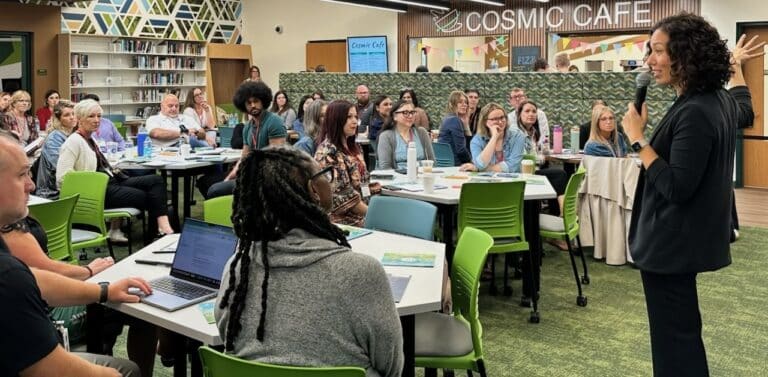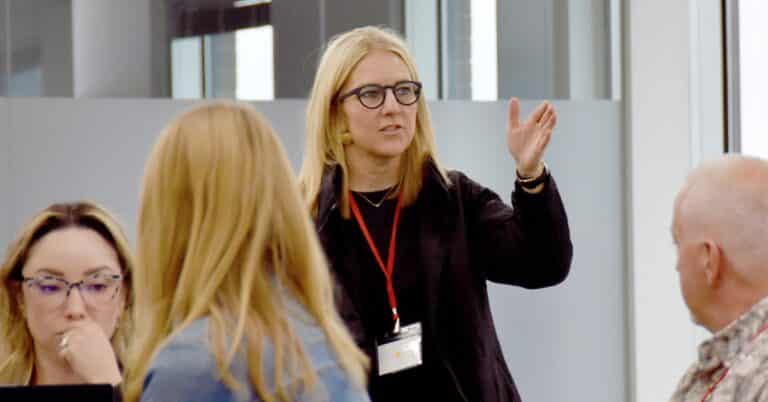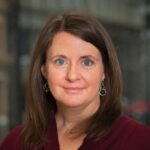At SXSW EDU 2025, KnowledgeWorks invited participants to step into the future, not just imagine it.
The “Red Pecan Learning Community 2035 Open House” was an immersive experience that included developing characters and collaborative design. The session, a follow-up to “Experiential Futures in Action: A 2034 Graduation Party,” which we hosted the year before, offered a hands-on approach to exploring what learning might look like 10 years from now.
Here are seven ways immersive experiences, such as the “Red Pecan Learning Community 2035 Open House,” can be a powerful tool for futures thinking.
1. Make the future feel real
When one participant at SXSWedu asked if the scenario was real and tried to partner with the fictional organization, it illustrated that the experience had struck a chord. Immersive events blur the line between imagination and reality, helping people engage with future possibilities in a tangible way and rehearse possible situations in a low-stakes environment.
2. Experience the future as shared experience
Immersive experience engages participants in a shared experience, with many different perspectives getting to “test out” a future. This type of shared experience can help people clarify and commit to a shared vision, create meaningful conversation about how people can experience the same changes differently and spark deep insights into new strategies and approaches.
3. Invite curiosity and improvisation
Facilitators and participants can deviate from the script, explore ideas and respond to unexpected questions. That flexibility makes experiences richer and more responsive.
4. Get playful
Participants remarked that immersing in the future feels playful, even if the future being explored is serious. Engaging in serious play can help lower resistance and resistance to thinking about the future.
5. Build confidence through preparation
A quick-start option for immersive events is giving people a simple character template. “Even if it’s just to get the conversation started around who you want to play,” one facilitator said, “it’s a good addition to our toolkit.”
6. Create ownership through design
In-person immersive experiences aren’t just thought exercises. Because they take place in a physical space, participants can use that space to personalize what happens. Props and tools to help set the stage can strengthen the overall experience.
7. Spark imagination with future scenarios
Casual references to imagined events, such as artificial intelligence conflicts or climate-driven business shifts, captured the attention of our attendees at SXSWedu and helped ground the experience in plausible futures. These “precipitating events” provided participants with something to react to and build upon.
Immersive events, such as the ones we hosted at SXSWedu and in Pittsburgh, Pennsylvania, are a way to test ideas and imagine new possibilities together.






